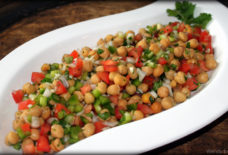Healthy Spices and Seasonings found in your Arab Kitchen
BritannicaBy: Joyce Behrens/Arab America Contributing Writer
With COVID-19 circulating everyday life, it’s essential to keep healthy during these difficult times. Not only with fruits and vegetables, but from condiments too. Seasonings and spices have a long history. In early history, medicinal healing used different assortments of spices. During the times of trade routes, spices and seasonings were one of the primary commodities. Ingredients spread out through different cultures. As time went on, they became the foundation for cultural cuisine. In the Arab world, spices and seasonings have a unique purpose. As you open your pantry or cupboard, some condiments have significant meaning to Arab cuisine. Not only is their use for cooking, but also health remedies as well. Check out the spices and seasonings that are essential in your Arab kitchen.
Cinnamon
McCormmick Science InstituteCinnamon is one of the first spices created. One interesting fact is before cinnamon became useful in food taste, Egyptians used it as a perfume in 2000 B.C. Based on its aroma, it has a musty and woody scent that is recognizable. For health purposes, it is loaded with anti-inflammatory benefits. It will also fight against bacterial infections. When it comes to Arab cooking, it has its use in seasoning chicken and rice dishes. In savory dishes, it’s not a massive standout in flavor. However, the background notes of the spice develop. Also, you can find cinnamon has different combinations of spice blends. For example, Baharat is a spice blend that consists of seven spices; one of them is cinnamon.
Black Seeds
Islam WebAnother seasoning from an Arab pantry is black seeds, which is also known as Nigella seeds. In early history through present times, black seeds were/are an addition for culinary and medical purposes. One of those medical purposes is respiratory protection. Egyptians first used black seeds as a way of panacea. They have the use as a remedy to mend and cure illnesses such as headaches, colds, allergies, etc. It’s even said that Cleopatra used black seeds as beauty remedies. When it comes to Arab cuisine, black seeds are common in bread, soups and salads. A dish that showcases the seasoning is Qizha, a sweet, delicious Palestinian dessert that takes away the overpowering smoked, pepper flavor.
Turmeric
About HerTurmeric is known for its distinctive color on the spice rack. One of its health benefits is promoting antioxidants that support the immune system. Not only will it help reduce the risks of the virus, but it can prevent the risk of cancer and heart disease as well. Also, its flavor palette is more on the earthy, peppered notes. Originally, this spice is from India. It started to become popular in the Arab world during the sea route trade. Arab merchants then started to sell Turmeric around the 13th century. In terms of cuisine, you have Turmeric in most rice dishes. For example, Moufataka, which is a traditional Lebanese rice pudding with tahini and pine nuts. Another popular Lebanese favorite with Turmeric is Sfouf. This is a delicious dessert cake with semolina as well. It comes across as nutty, but it’s not too sweet because the Turmeric helps balance it out.
Saffron
Step FeedSaffron is one of the most expensive and luxury spices in the world. It first was found along the lines of the Mediterranean sea. The Arab country that now specializes in this spice is Morocco. Like the other previously listed condiments, saffron does promote antioxidants to the body. Not only medical benefits, but it is said that it adds mental health benefits too. During these times of isolation, it can be difficult not physically to enjoy life like before. When utilizing saffron, it can be tricky. The flavor is very delicate, so you can’t use it with caution. However, less is more to saffron as well. It’s described as having a hay-like palette, but too much will make it become grassy. When it comes to Arab cooking, it’s the same as turmeric; it’s common to have saffron in rice dishes. One of them is Maqbous, which is Omani chicken spiced rice. You will also find saffron in your Qahwa, also known as Arab coffee.
Sumac
Halal Healthy WayFull of vitamin C, sumac has properties that are crucial to have for the immune system. Also, it’s beneficial to remove the toxins out of the body. Like saffron, sumac was initially found along the lines of the Mediterranean border. However, sumac has a different flavor palette than the previous spices. It has a tart, lemon-like taste. When it comes to Arab cuisine, it is relatively popular. Sumac is an ingredient in Fattoush salads, which are the Arab version of Panzanella salads. The most popular spice blend in the Arab world, Za’atar, contains sumac, which is accompanied with thyme and sesame seeds to accent the sour flavor of the sumac.
Cumin
Exporters IndiaCumin specifically originated in the Arab world. There was a discovery of the spice in the Levantine region, as part of the parsley herb family. Like some of the earliest discovered spices, cumin had medicinal purposes. For example, cumin is naturally full of iron, a needed component for a healthy system. There are properties of anti-inflammatory benefits; however, there are not to the extent of turmeric. When it comes to the taste of cumin alone, it has a warm, musky tang to it. It’s somewhat similar to coriander since both are from the parsley family. In terms of Arab dishes, it’s common in savory, main course dishes as opposed to desserts. Mujaddara, which is lentils and rice with caramelized onions garnished, holds on to the flavor of cumin well for the starch dish.
Check out our BLOG here!


